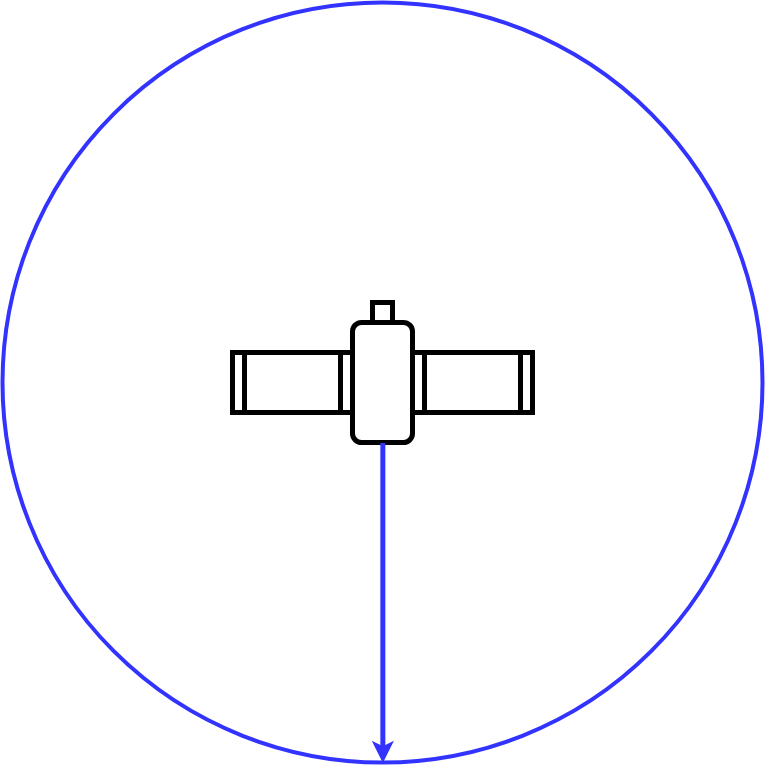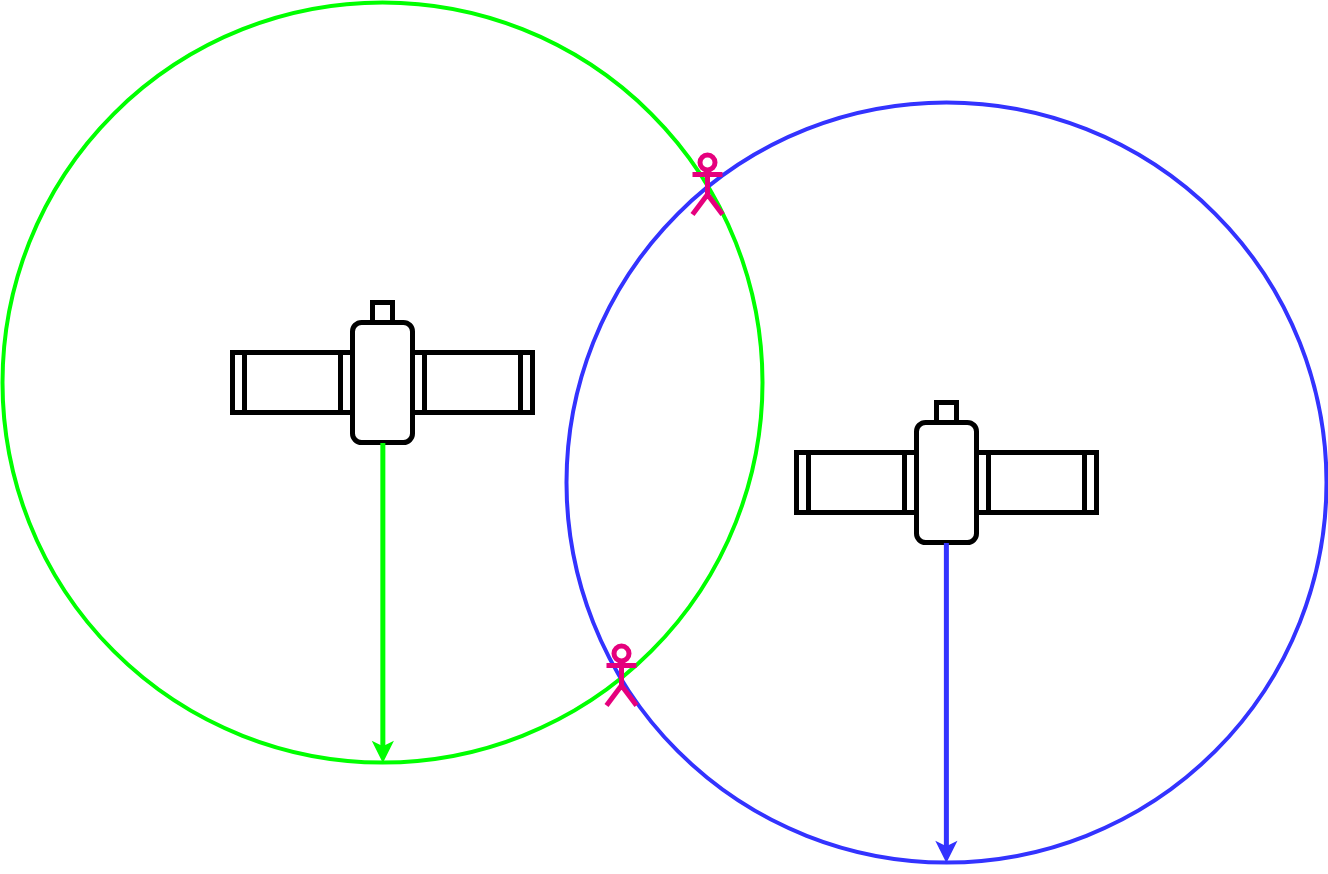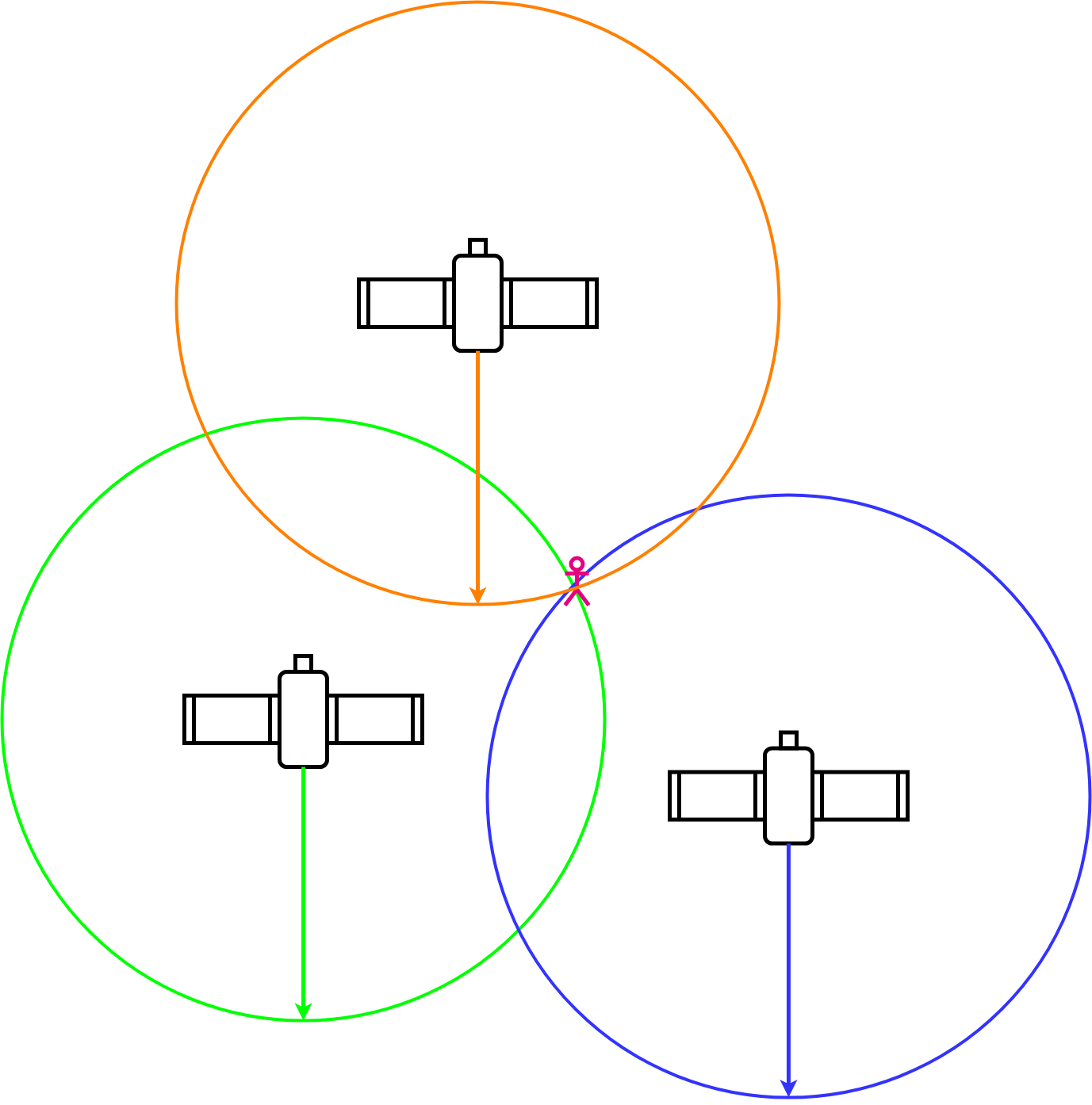Flying clocks and draining batteries: Two very different methods your phone can use to find your location (Part 1)
The Global Positioning System
This article was written by Asher Gibson, Policy Officer.
The Global Positioning System (GPS) is made up of around 30 clocks, drifting through space, telling everyone what time it is.
They do this by constantly blasting out a radio signal containing the current time and the location of the satellite. Your phone knows what time the signal was sent and what time it arrived at your phone. Since radio waves move at a constant speed, your phone can use the time differences to calculate how long the signal was travelling, and therefore how far away you are from the satellite. Since the signal contains the satellite’s location, your phone knows you must be somewhere along a circle a set distance from the satellite:

NB: GPS provides 3 dimensional coordinates (latitude, longitude, and altitude). Technically the area that you could be in is a sphere, but for simplicity’s sake we can assume that your feet are firmly planted on the ground.
If you receive two signals from two satellites, your phone knows that you must be somewhere that the two circles touch:

Now as you can probably guess, once you have three satellites, your phone can figure out where the three circles intersect, and therefore where you are:

NB: Technically there will be two possible locations with three satellites (remember, spheres), however one of these locations would require you to be in an impossible location, i.e. not on the surface of Earth, leaving one realistic possibility.
Except not quite. Remember when I said that GPS is basically just clocks floating through space? Well, those clocks are very accurate, synchronised, well maintained, atomic clocks. The clock in your phone is imprecise in comparison, plus thanks to general relativity, times moves slightly faster on Earth than in orbit. In order to make accurate calculations, your phone either needs an atomic clock (not going to happen, they are very expensive and take up too much space) or a fourth satellite’s signal to correct for your phone’s timing inaccuracies. With signals from four satellites, your phone can calculate its exact location to within a metre or two.
What does this mean for privacy?
Interestingly enough, GPS is pretty much the gold standard in terms of privacy, assuming you look at it in isolation. It’s one-way communication – a satellite sends out information about its own location but is incapable of knowing who receives this information or where they are. Privacy problems only begin when calculations your phone makes about its location are stored or sent to a third party over the internet.
Individuals have good controls over their phone’s GPS. Most devices provide a clear indicator if it is on, and provide an easy way to turn it off, which might be a good idea because GPS will drain your phone’s battery.
You can read Part 2 of this blog post here.